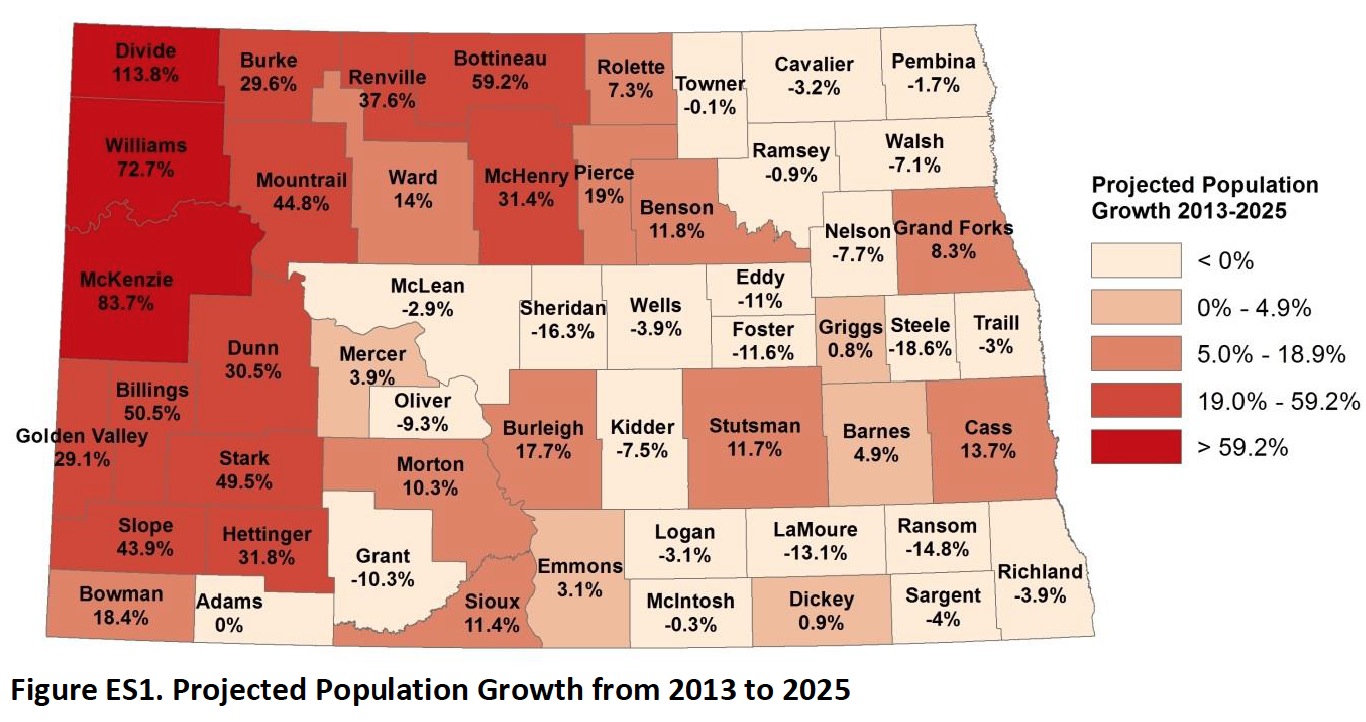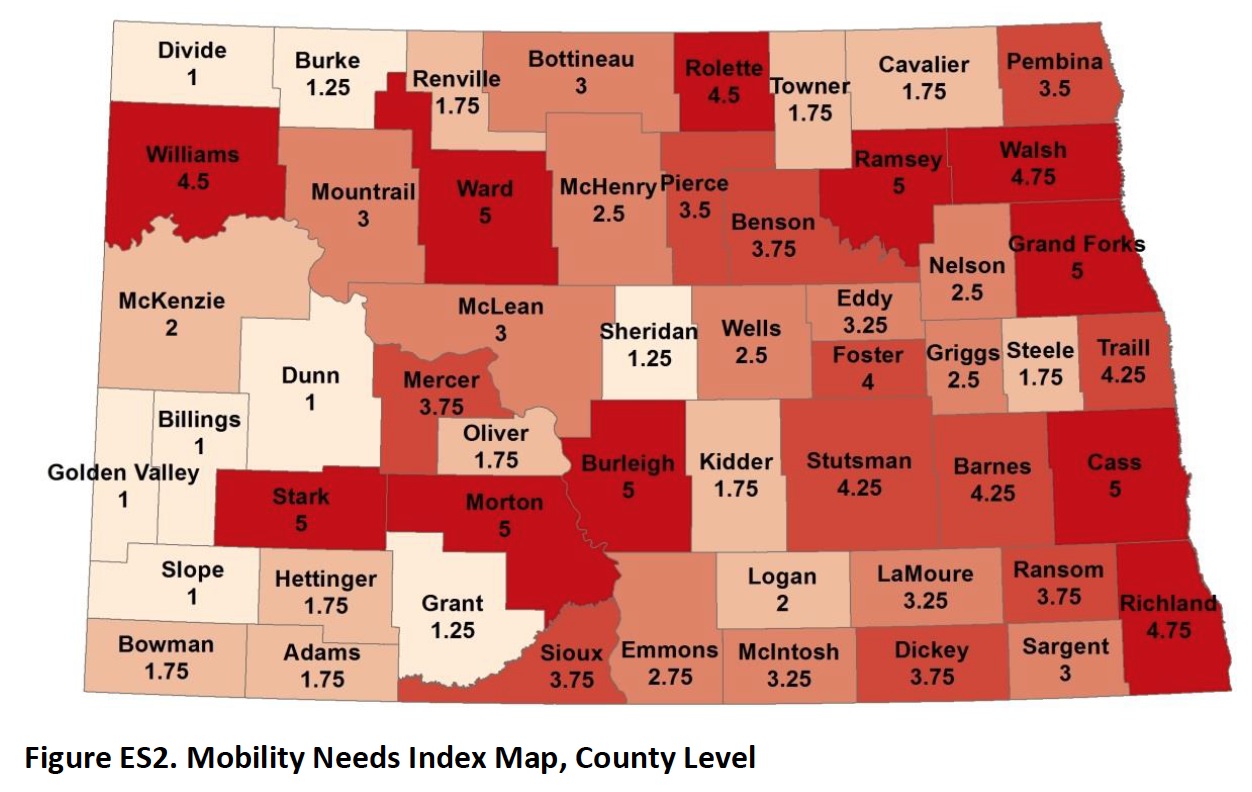UPPER GREAT PLAINS TRANSPORTATION INSTITUTE
Executive Summary
The intent of this study is to provide North Dakota policy makers with a guide to future development of personal mobility options and to identify gaps that either exist now in mobility services or are likely to exist in the near future as the result of service modifications or changing demographics and population growth. The scope of the study includes local and regional passenger transportation.
Results can be used to identify programmatic and funding needs related to personal mobility, determine funding priorities for the use of state funds and federal funds under state control, and provide guidance to city and county governments for addressing personal mobility needs. Further, the data collected can be used by local and regional agencies to plan for new or revised local services. Lastly, the shrinking transit trust fund could mean reduced federal funding for North Dakota systems resulting in either reduced services or an increased requirement for state and local funding. This study illustrates how this uncertainty regarding federal funding could impact state funding needs.
The objective of this study is to determine the financial needs of the state transit providers. Specific tasks include the following:
- 1. Construct a demographic profile of the state of North Dakota
- 2. Develop a mobility needs index
- 3. Describe existing levels of transit service across the state
- 4. Identify base levels of required transit service and gaps in existing service
- 5. Develop recommendations for meeting mobility needs
- 6. Determine the level of funding needed to maintain the current level of service
- 7. Determine the level of funding needed to expand the existing level of service
Population Growth, Demographic Profiles, and Mobility Needs Index
Population growth and demographic trends are impacting the needs for public transportation services across the state. The estimated statewide population climbed to 723,393 in 2013, an 8% increase from the 2010 census. Population is projected to increase to 841,820 by 2025, a 16% increase from 2013 estimates. Significant growth is expected in the western and north central parts of state, as well as in Burleigh and Cass Counties, while some counties in the northeast, southeast, and central parts of the state are expected to lose population (Figure ES1).
The demographic characteristics of the population are also important determinants of the need for transit services. Older adults, people with disabilities, low-income individuals, and those without access to a vehicle are more likely to need transit services. Some of the low-population rural counties have a higher percentage of older adults or other groups that have a greater need for transit services. For example, in McIntosh, Sheridan, and Wells counties, 29% or more of the population is 65 or older; in Sioux, Rolette, and Benson counties, the population below the poverty line ranges from 35% to 43% and the population with a disability ranges from 44% to 49%. With 8.4% of workers without access to a vehicle, Sioux county has the highest percentage of individuals without a vehicle to drive to work.
One trend expected to increase demand for transit services is the growth of the elderly population. Statewide, the population aged 65 or older is projected to increase 52%, from 97,477 in 2010 to 148,060 in 2025. In 2010, 14.5% of the state’s population was aged 65 or older, and by 2025, it is expected that 17.9% will be 65 or older.
Total population, population aged 65 or older, population with a disability, population below the poverty line, and population of workers without access to a vehicle are important factors for determining mobility needs. Using these variables, a mobility need index, expressed with a 1-5 scale, was estimated to identify areas with the greatest needs for mobility services. The values calculated for each of North Dakota’s counties are presented in Figure ES2. The results are fairly intuitive, as the more highly populated counties have the highest values. Some lower-population counties rank higher because of high concentrations of transportation-disadvantaged populations.
About the Upper Great Plains Transportation Institute
www.ugpti.org
The Upper Great Plains Transportation Institute (UGPTI) is a research, education, and outreach center at North Dakota State University which is guided, in part, by an advisory council composed of representatives of various organizations, industries, and agencies affecting or affected by transportation.
Tags: mobility, ND, North Dakota, North Dakota Department of Transportation, Small Urban and Rural Transit Center, UGPTI, Upper Great Plains Transportation Institute








 RSS Feed
RSS Feed